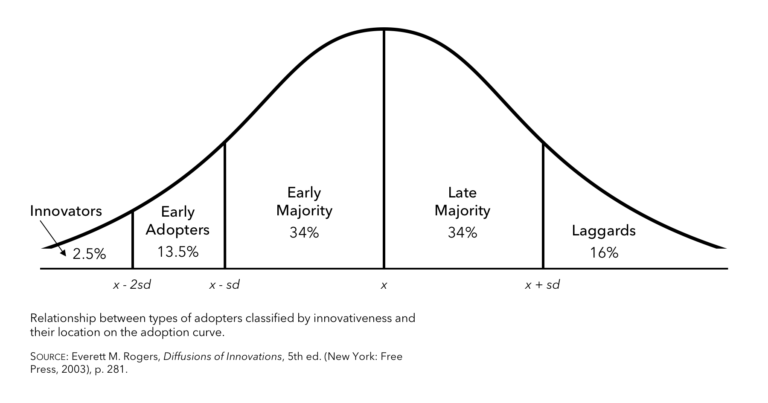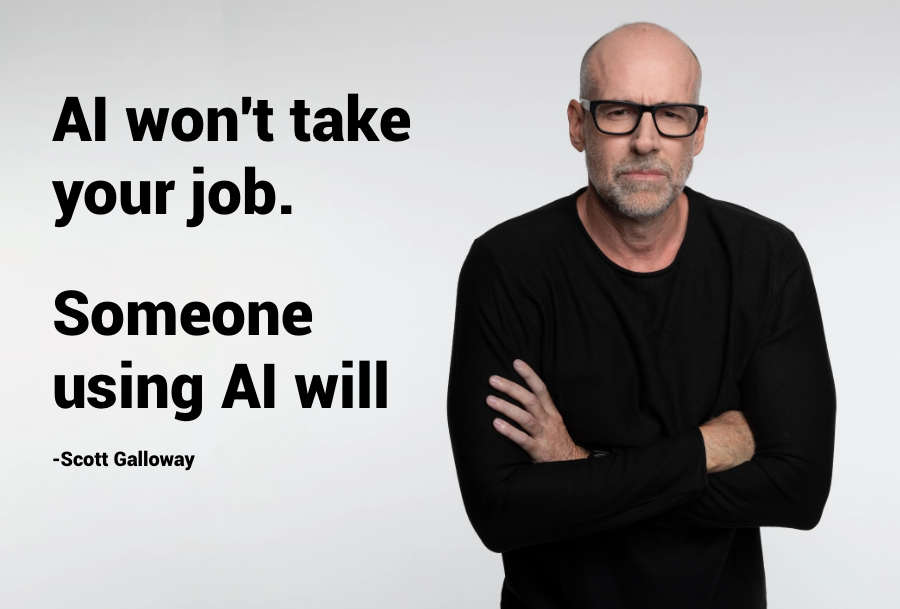“AI won’t take your job. Someone using AI will.” That quote is from NYU professor Scott Galloway. In discussing ChatGPT’s potential role in fact-checking news and social media, he lands on how technology works its way into society.
The classic framework for this is the Rogers Curve, made popular in Geoffrey Moore’s book Crossing the Chasm. The terms innovator, early adopter, majority, and laggard come from this model. The idea is that people vary in their tolerance for different types of change.

Some people get a new phone every year because “new” is the valuable part of it. It is being first, whether the latest style or a new business model can be worth the risk. In fact, innovators and early adopters often seek out risk. “This might not work.” Because if that’s the case, there’s less competition. That can be for attention at the club or winning that next customer.
Back to AI then, a group (usually <25% of the population) will run ahead of everyone else. ChatGPT may speed things up as the fastest-growing product ever, but the idea still applies. Most people (and companies) will wait until it’s a necessity.
For an analogy, look at the adoption of spreadsheets (shout out to all the Lotus 1-2-3 fans in the house). It didn’t replace bookkeepers. It made them much more capable, both in productivity and preventing errors. The value was not in delivering expertise but in taking away the tedious. A tool for the expert, not instead of the expert.
There’s a mythical quest from startup founders to find a team of 10X engineers. This is someone who can deliver 10x the value of an average engineer. Not quite Big Foot mythical, more like black swan rare. See Jeff Dean at Google as an extreme example.
With tools like Microsoft’s Co-Pilot for Github, “average” has the potential to skyrocket. Better comments in code. Less first-time errors. Faster and more complete unit testing. These are all things that automation from a large language model can enable.
So back to Prof Galloway’s point. Change in this S-Curve of AI’s capability won’t be the elimination of work. Instead, it’ll be the end of mediocre activities. No one will ever hire someone to write boring press releases. Or shoot bland stock photography.
The work that will be more valuable is unique and differentiated. At least for a time, it will also be those that embrace and exploit the technology to make 10x the average.
